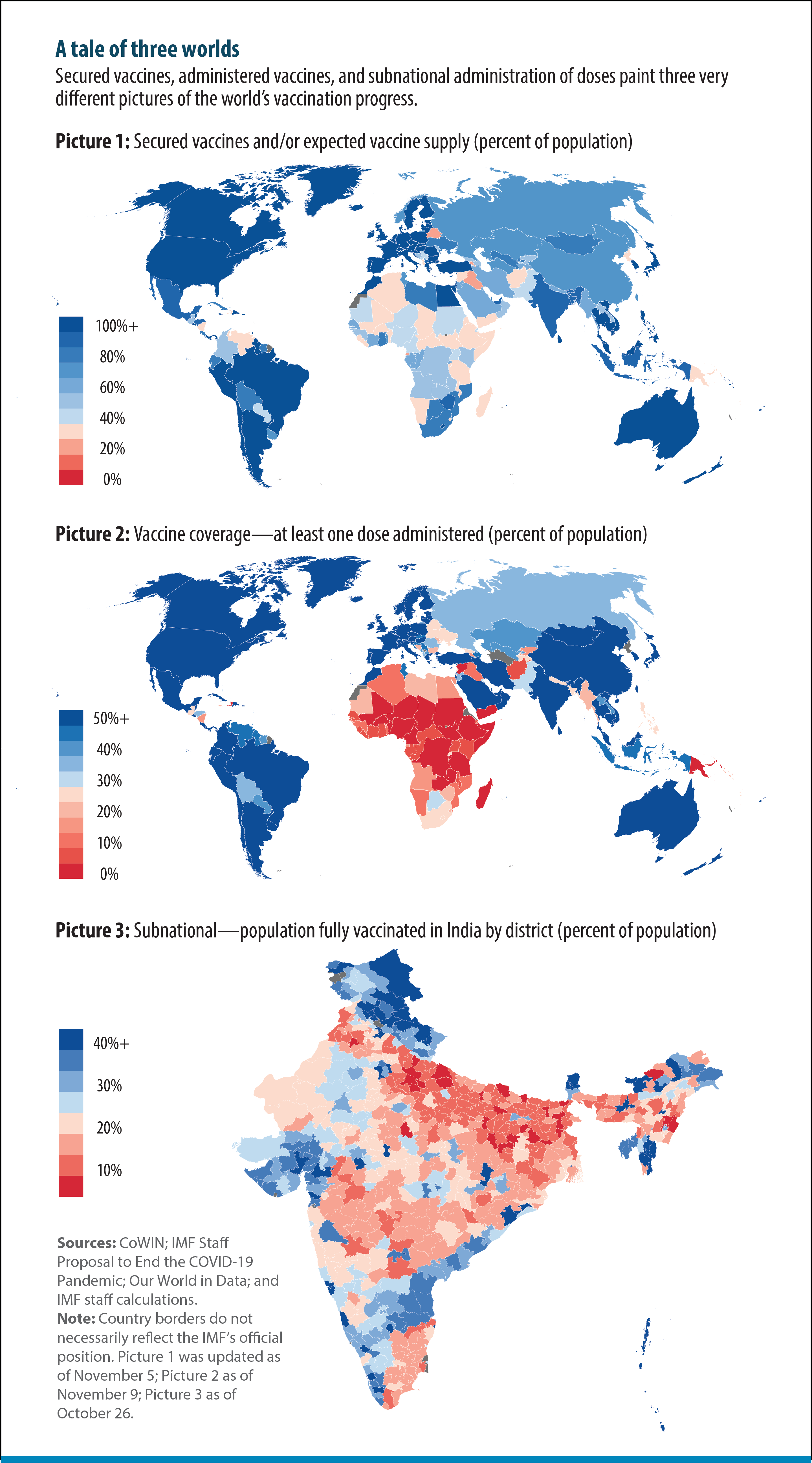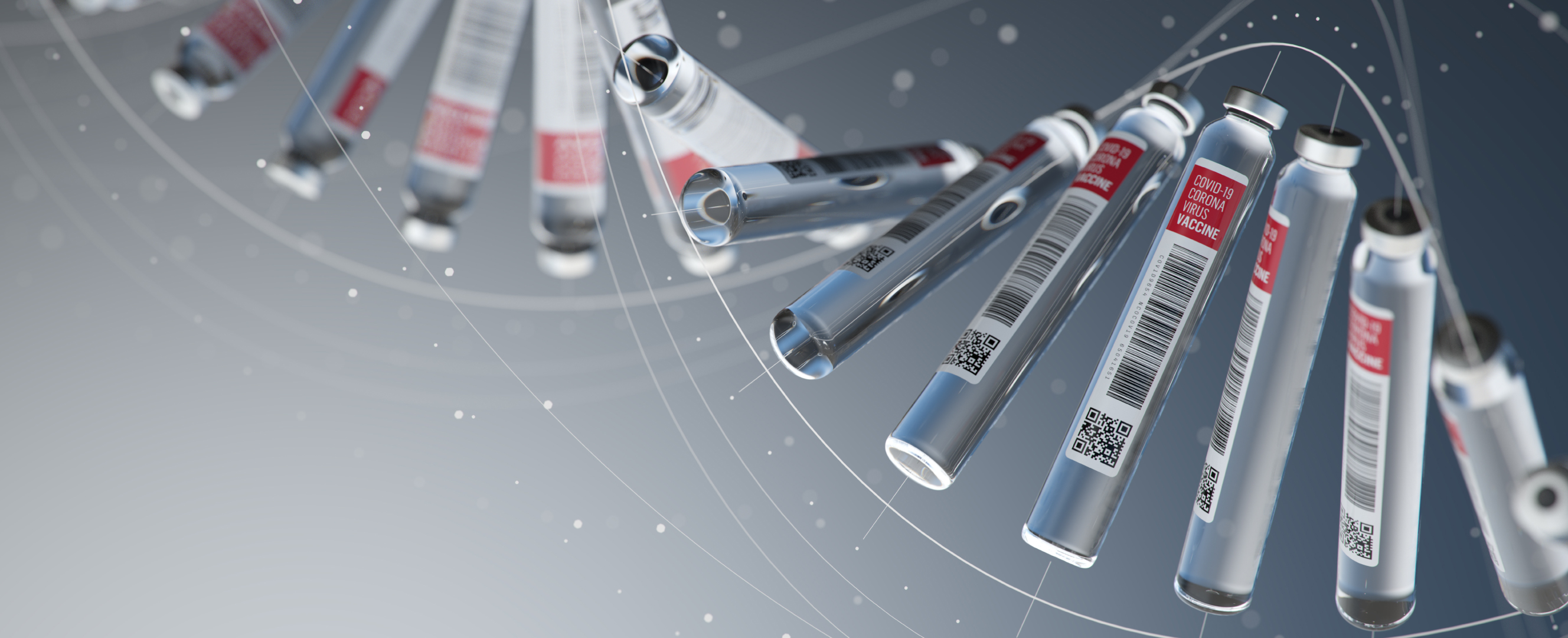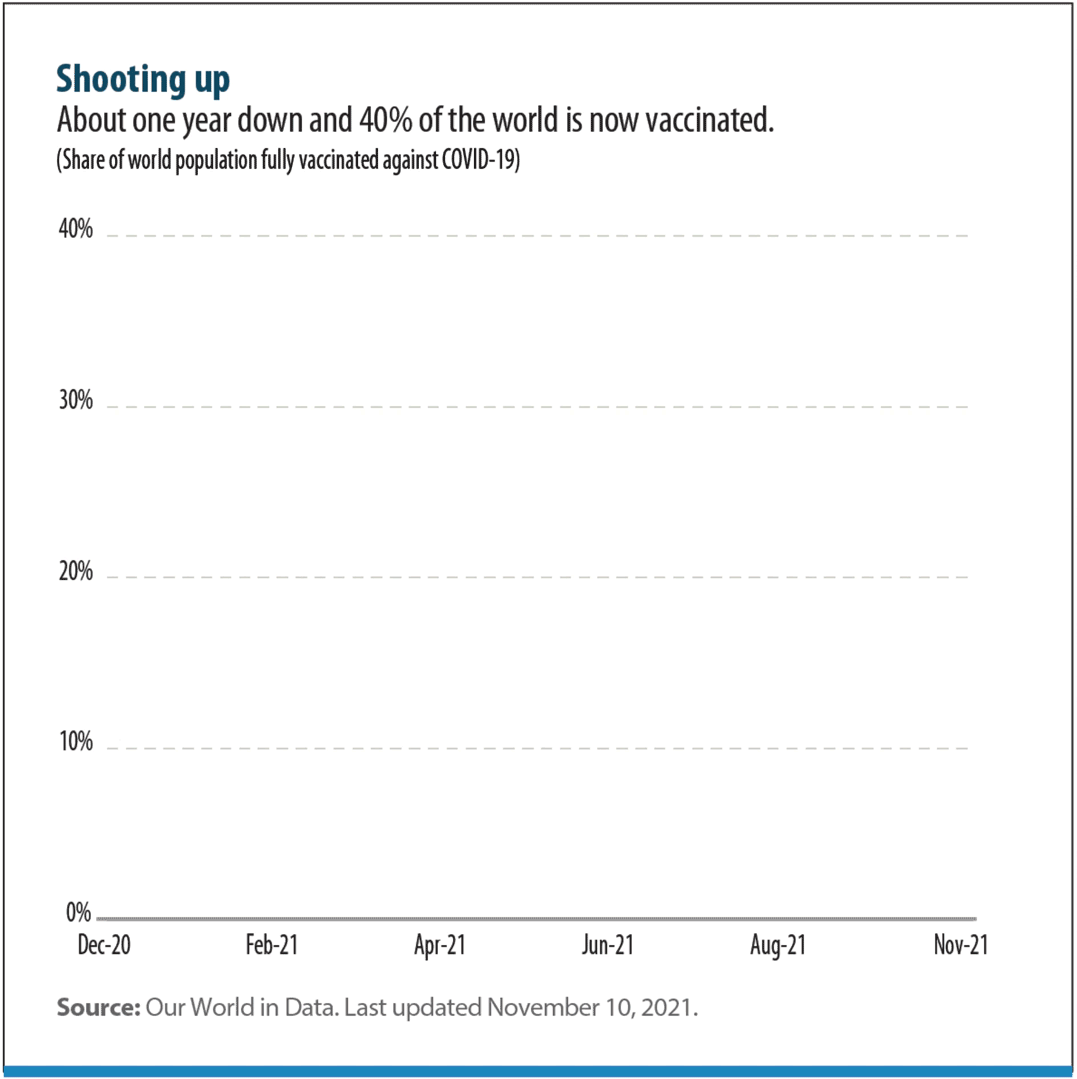The development of COVID-19 vaccines has been miraculous, but the path to inoculating the world presents many obstacles
In 1882, Dr. Robert Koch discovered the bacteria that cause tuberculosis (TB), at a time when it killed one of every seven people in the United States and Europe. But a vaccine wasn’t developed until 1921, and it offers only moderate protection against severe TB in infants and young children. No vaccine effectively prevents TB in adults, and the disease claims 1.5 million lives a year.
In contrast, COVID-19 was identified in January, 2020. By December 2 of that year a vaccine developed by BioNTech and Pfizer was approved for emergency use in the United States. Other vaccines have since come on the market. While TB and COVID-19 are different diseases, with unique challenges, the exceptional public financing and regulatory support for COVID-19 vaccine research, development, testing, and manufacturing have been a game changer.
The journey of the COVID-19 vaccine has only just begun, however. The challenge now is to immunize the world and continue to conquer new variants. There has been good progress on the first front so far—total vaccination rates have risen and continue to rise rapidly.
A look at the data behind the high-level numbers, however, reveals some worries that must be addressed quickly to reach the global vaccination target of 40 percent in every country by the end of 2021 and 70 percent by mid-2022.
On the surface—in terms of secured or expected delivery of doses—things appear to be going well. Most advanced economies have contracted more than enough vaccines to cover their entire population and even many developing countries have managed to do the same directly or indirectly through vehicles like COVAX.
There is a problem, though, with doses delivered: a disconnect between vaccines on paper and those at port. For example, COVAX, which delivers vaccines to developing economies, has contracted and received donation pledges for over 3 billion doses, but only about 440 million of those have been received so far.
The result of this is a deep inequity in doses administered across countries: high-income countries have vaccination rates exceeding 65 percent, while many low-income countries barely top 3 percent. This is why the IMF is urging immediate action to prioritize deliveries to those developing economies with low vaccination rates.
Data at the subnational level reveal another problem—uneven distribution of vaccine coverage. As seen in some advanced economies, once the near term supply challenge is addressed, demand and vaccine hesitancy may become the next big obstacle for developing countries.

Opinions expressed in articles and other materials are those of the authors; they do not necessarily reflect IMF policy.











